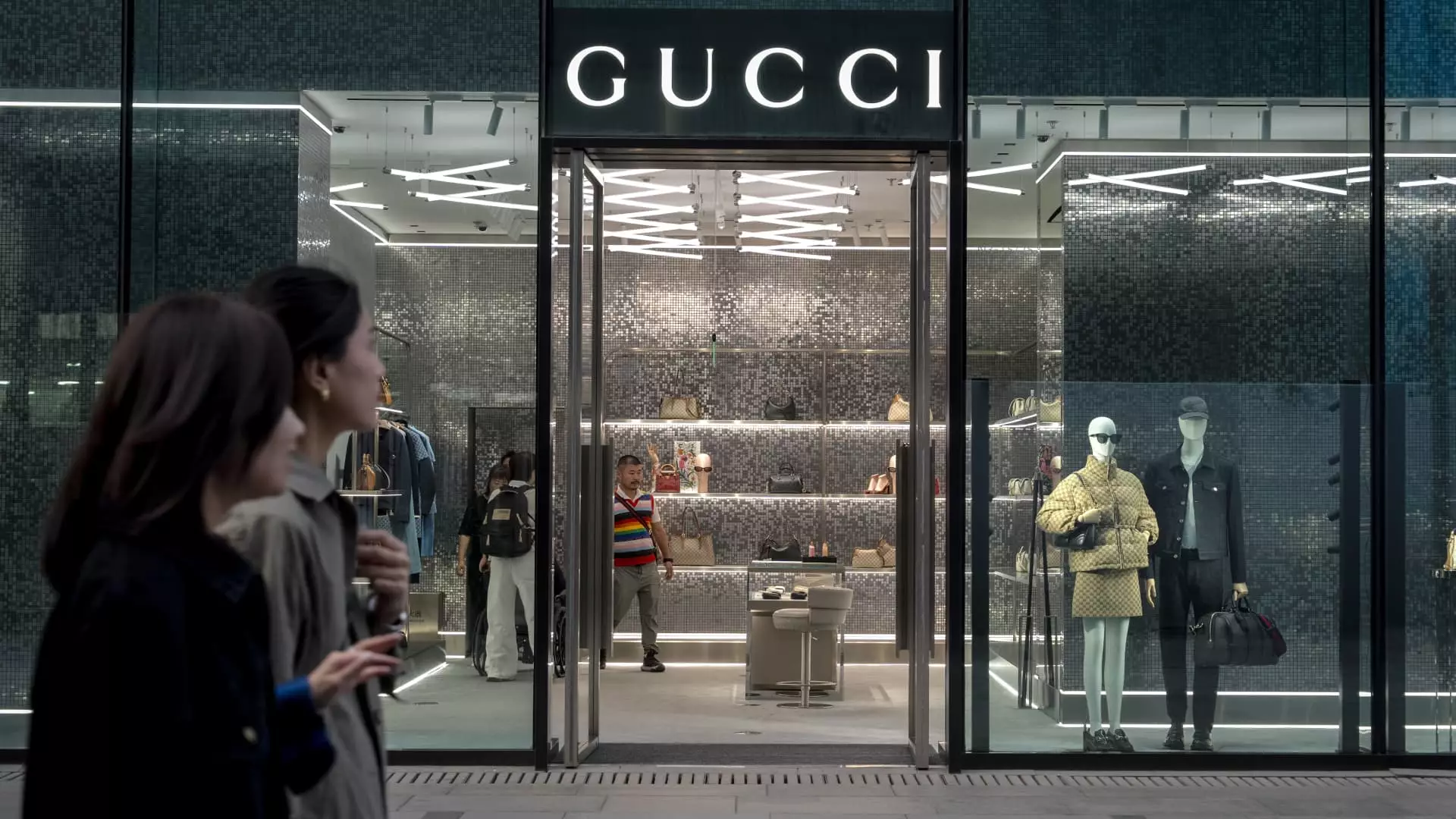The luxury fashion sector is renowned for its volatility, and Kering, a leading French luxury goods firm, exemplifies this turbulence. In recent reports, Kering disclosed fourth-quarter sales that, while slightly exceeding analyst expectations, still reflected a significant year-on-year decrease. This scenario underscores the struggles faced by luxury brands today, especially in light of the declining demand for Kering’s flagship label, Gucci.
Kering’s fourth-quarter revenues fell by 12%, totaling €4.39 billion ($4.52 billion) which marginally surpassed the forecast of €4.29 billion predicted by analysts from LSEG. However, this slight positive variation does little to mask the underlying issues; the steep decline highlights a worrying trend for the company’s premier brands. Of particular concern is Gucci, whose sales account for nearly half of Kering’s total revenue. Over the last three months, Gucci reported a staggering 24% drop in annual sales, bringing in €1.92 billion on a comparable basis. This grim figure indicates a continued downward trajectory for a brand that was once a darling of the luxury sector.
The downturn is not limited to Gucci alone, as Kering’s overall full-year sales also saw a shrinkage of 12%, with a total of €17.19 billion, slightly above the expected €17.09 billion. Notably, operating income for the year registered at €2.55 billion, consistent with revised forecasts but nearly 50% lower than the previous year’s impressive results. Such statistics convey a narrative of struggle amidst a backdrop of shifting consumer preferences and competitive pressures.
In the face of these challenges, Kering’s stock initially rose by 6% after the earnings report, only to temper later to a modest 0.5% increase by mid-morning trading in London. This response suggests cautious optimism among investors. Chairman and CEO François-Henri Pinault’s statement reflects a resolve to adapt and evolve: “In a difficult year, we accelerated the transformation of several of our Houses and moved determinedly to strengthen the health and desirability of our brands for the long term.” Pinault’s comments hint at Kering’s commitment to a long-term strategy, despite immediate setbacks; their focus appears concentrated on reinvigorating brand desirability.
The slight improvements in sales from regions such as Asia Pacific and North America, particularly within the Yves Saint Laurent and Bottega Veneta brands, offer a glimmer of hope. However, the lack of specific market details raises questions about the sustainability of these upward trends. The global luxury goods market remains bruised, particularly due to pressures on the Chinese consumer, a critical demographic for Kering.
A significant part of Kering’s current strategy involves restructuring at the helm of Gucci. The company recently announced the departure of Gucci’s design chief Sabato De Sarno after less than two years in the role. His brief tenure contrasts sharply with his predecessor Alessandro Michele, whose maximalism had characterized Gucci’s image. These leadership transitions signal Kering’s urgent desire to recalibrate its approach to design and brand identity.
Analysts believe that appointing a new designer could rejuvenate the brand, though it also highlights enduring concerns. Simone Ragazzi from Algebris Investments indicates that the market is tentatively optimistic about this reset in Gucci’s creative direction. However, skepticism lingers due to leftover challenges from past strategies that may linger in consumer perceptions and brand positioning.
Kering’s shares have demonstrated a rocky path throughout 2023, currently down 2.5% year-to-date, and losing more than half their value compared to 2022. This decline emphasizes the uphill battle facing the group as they try to recapture lost allure in the luxury market. Analysts like Luca Solca from Bernstein recognize signs of operating profit improvement across various brands but caution that recovery to previous performance highs will demand significant effort.
The luxury sector’s recent performance, particularly the mixed results from industry players such as LVMH and Richemont, outlines a complex environment for Kering. While the broader market awaits signs of a long-term revival, Kering’s ability to navigate these transitional waters will be crucial. Whether the company can indeed reposition Gucci and reinforce its other brands’ desirability will define its trajectory moving forward. As Kering continues its transformation, the luxury industry’s eyes will be keenly watching to see if the dreams of revival can turn into actualized results.

